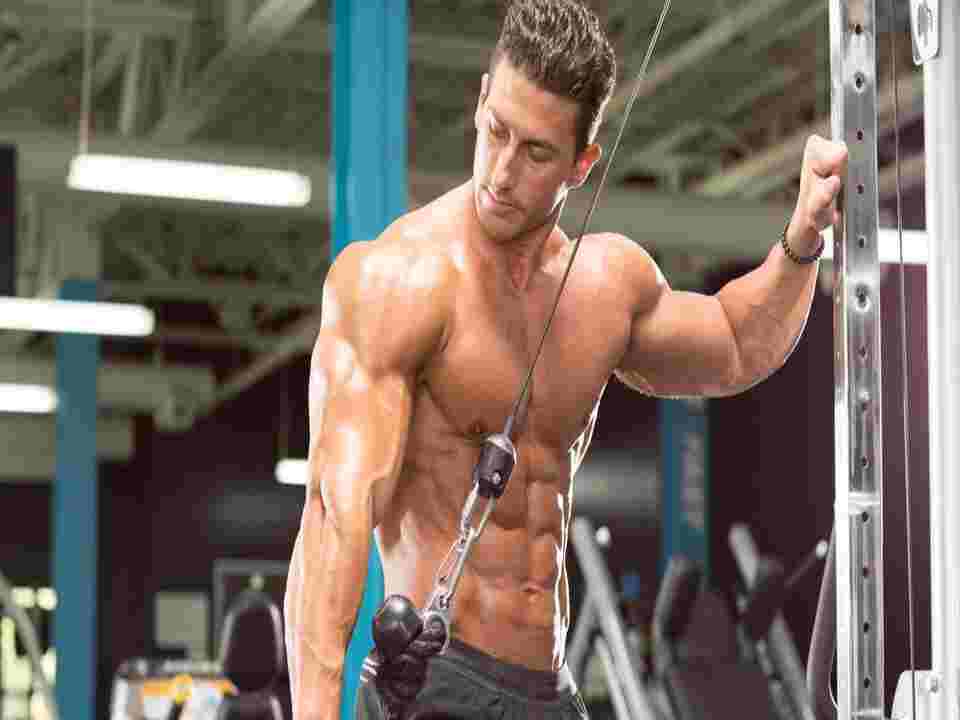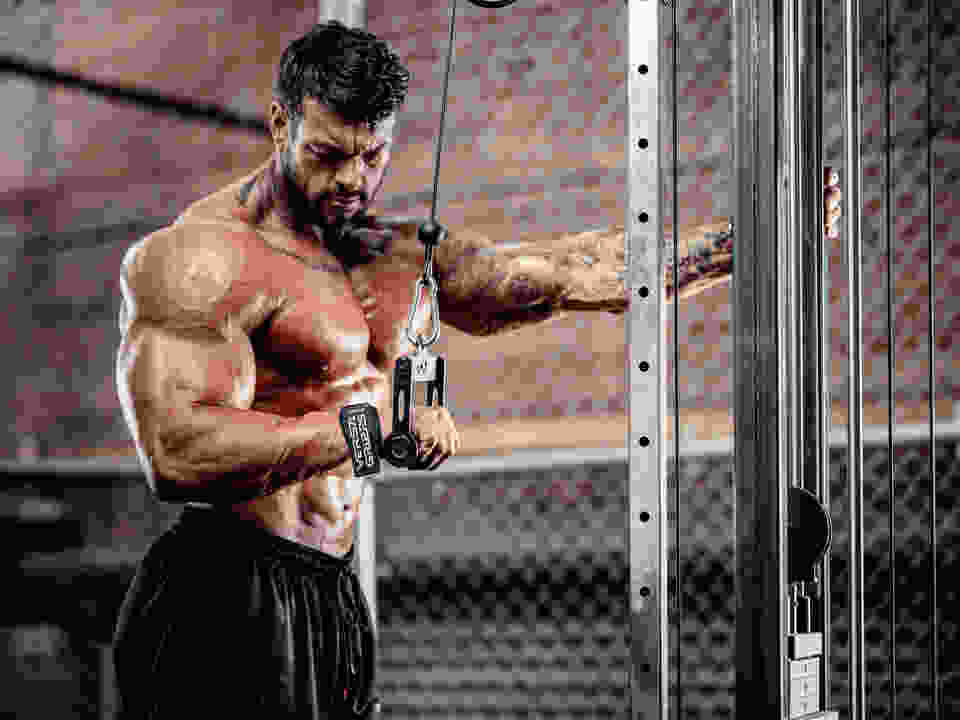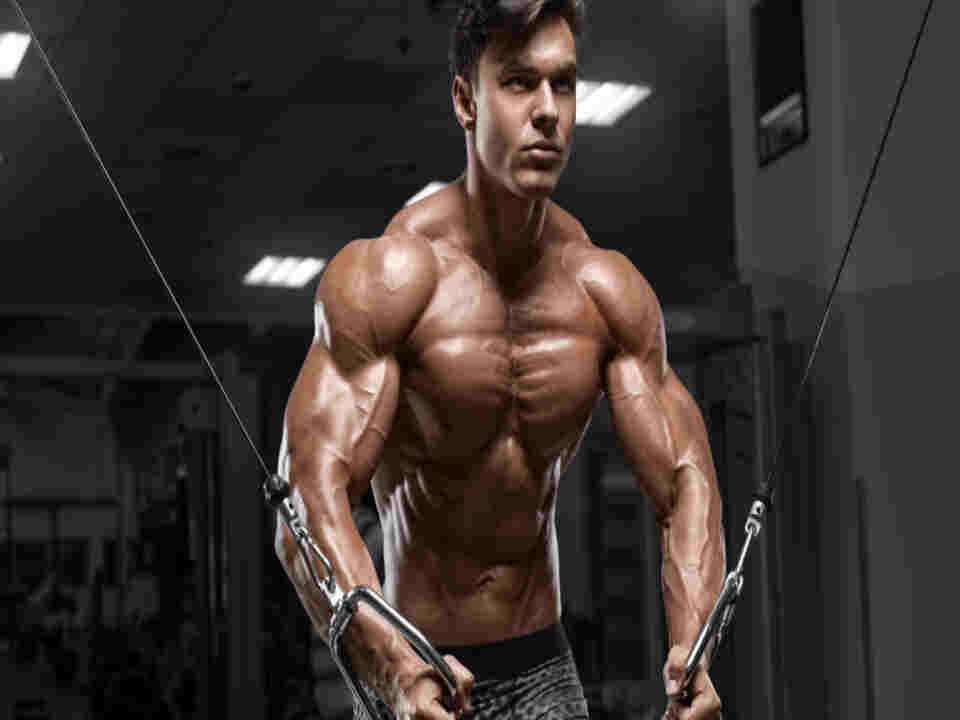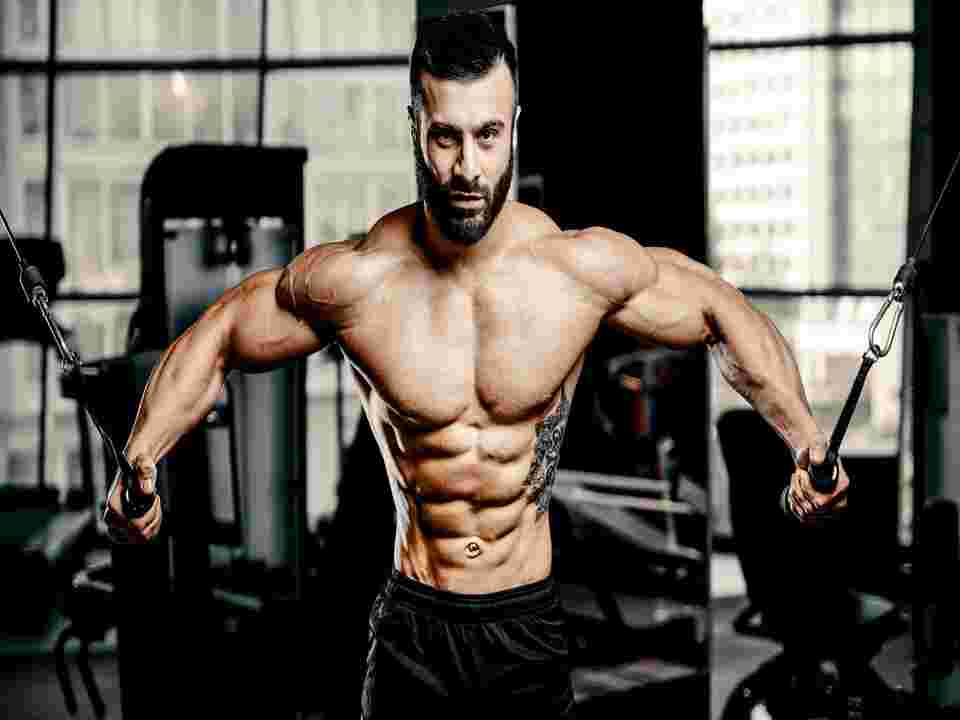
Building an impressive and strong set of shoulders requires not only dedication but also a strategic approach to training.
Cable shoulder workouts offer a multitude of benefits, including constant tension for muscle isolation, a wide range of motion, and the versatility to target each part of the shoulder muscles effectively.
Incorporating cable exercises into your routine can lead to significant improvements in muscle strength and aesthetic, making them an essential component for anyone looking to enhance their shoulder development.
Whether you are just starting out or are a seasoned athlete, understanding the right techniques and variations of cable exercises can revolutionize your training routine.
This article serves as the ultimate guide to mastering cable shoulder workouts with cables, providing detailed instructions and benefits for a variety of exercises designed to build shoulder strength and size.
From standing cable shoulder presses that emphasize anterior deltoids to seated cable rear delt flies that target the often-neglected posterior deltoids, each exercise is broken down to ensure optimal performance and results.
Additionally, this guide will cover best practices for cable upright rows, standing cable face pulls, and cable lateral raises, catering to a broad spectrum of fitness enthusiasts, including those searching for back and shoulder cable workouts, specific routines like cable shoulder workouts with cables for women and men, and techniques for those preferring shoulder workouts using a cable machine.
Table of Contents
ToggleStanding Cable Shoulder Press:
Target Muscles
Standing Shoulder workouts with cable press primarily engages anterior deltoid, which is crucial for shoulder flexion and abduction. Secondary muscles involved include the lower and outer triceps, side shoulder, upper back, and upper chest.
This exercise not only targets the front portion of the shoulder but also engages a significant part of the upper back, including muscles like the trapezius and those around the shoulder blades, which help stabilize the shoulder during the press.
How to Do It
Adjust the cable machine pulleys to the lowest setting and attach a single-handle grip to each.
Stand with feet shoulder-width apart and grasp the handles with an overhand grip.
Start with your hands positioned at shoulder height, elbows bent at 90 degrees.
Keep your back straight and core engaged, exhale and press the handles overhead until your arms are fully extended.
Pause briefly at the top, then inhale as you slowly return to the starting position.
Tips for Best Results Shoulder Workouts With Cables
Maintain an upright torso throughout the movement to prevent undue stress on your lower back. If you experience discomfort, engaging your glutes and abs can help maintain proper posture.
Ensure your elbows do not flare out to the sides; keeping them directly underneath your wrists or slightly inward promotes optimal force production.
Avoid using momentum to lift the weight; focus on a controlled movement to maximize engagement of the target muscles.
Consider performing a shoulder mobility test before incorporating this exercise into your routine to ensure you have the necessary range of motion for safe execution.
By following these guidelines, individuals can effectively enhance their shoulder strength and aesthetics, making the Standing Shoulder workouts with cables press a valuable addition to their workout regimen.
Seated Cable Rear Delt Fly
Target Muscles
Seated Cable Rear Delt Fly primarily targets posterior deltoids, also known as rear delts, located at the back of the shoulder.
This exercise also engages the lateral delts, mid and lower traps, and rhomboids, making it a compound movement that utilizes a pull force.

How to Do It
Start by setting up the cable machine: attach a wide bar with a pronated grip and adjust the pulley to a height that allows your arms to be fully extended and parallel to the floor when seated.
Sit upright with your back straight and grab the bar with both hands.
Exhale as you pull the bar towards your mid-chest, keeping your elbows slightly below shoulder height to ensure the focus remains on the rear delts.
Inhale and slowly return to the starting position, maintaining control and keeping your body still throughout the movement.
Tips for Best Results
Maintain your elbows slightly below shoulder height to optimize shoulder health and focus on the rear delts. Avoid dropping your elbows too much as this could engage the lats, which are not the primary target of this exercise.
Use lighter weights compared to those used in typical cable rows, as the rear delts are smaller and require less load to be effectively worked.
Ensure slow and controlled movement to maximize muscle engagement and prevent momentum from taking over the exercise.
By adhering to these guidelines and focusing on form and technique, individuals can maximize the effectiveness of the Seated Cable Rear Delt Fly, thereby enhancing the development of the rear deltoids for better shoulder balance and strength.

Cable Upright Row
Target Muscles
Cable Upright Row primarily works the muscles of the shoulders and traps, effectively targeting the anterior and posterior deltoids, as well as the trapezius muscles.
This exercise is known for its ability to provide constant tension throughout the movement, ensuring that these muscle groups are thoroughly engaged.
How to Do It
Start by positioning the cable at the lowest setting and attaching a straight bar.
Stand upright, reach down, and grasp the bar with a pronated grip, keeping your arms straight.
Take a deep breath and pull the bar directly up the front of your body, driving your elbows high.
Continue lifting until the bar passes your lower chest, then exhale.
Slowly lower the bar back to the starting position, ensuring control throughout the descent.
Tips for Best Results
To reduce the risk of shoulder impingement, keep your elbows high but ensure they do not pass parallel to the ground. This helps maintain the focus on the target muscles without overextending.
If you experience discomfort in your wrists or shoulders, consider using a rope attachment instead of a straight bar.
This adjustment can help alleviate stress and adapt the exercise to your comfort level.
It is crucial to avoid allowing your back to arch or using excess weight, as these can lead to poor form and potential injury.
Focus on maintaining a straight posture and using a weight that allows for controlled movements.
Limit the use of extra momentum; strive for a movement that is smooth and steady to prevent the activation of compensatory muscle groups.
By adhering to these guidelines, individuals can maximize the effectiveness of the Cable Upright Row, enhancing shoulder strength and upper back development while minimizing the risk of injury.
This exercise is a valuable component of a comprehensive shoulder workout regimen, particularly for those looking to improve muscle balance and upper body aesthetics.
Standing Cable Face Pull
Target Muscles
The Standing Cable Face Pull primarily targets posterior deltoids, which are crucial for backward arm movements and are often overlooked by other shoulder exercises.
This exercise also engages the trapezius and upper back muscles, enhancing the overall strength and stability of the shoulder area.
How to Do It
Set up the cable machine with the pulley positioned slightly above head height and attach a rope with two hand-holds.
Stand with feet shoulder-width apart, reach up, and grasp the handles with palms facing in.
Step back until your arms are fully extended and lean back slightly to create a 20-degree angle with your body, which is your starting position.
Begin the exercise by pulling the handles towards your forehead while keeping your elbows flared out to the sides.
Focus on engaging the rear deltoids as you pull, and maintain a controlled movement without allowing your shoulders or chest to roll forward.
Slowly return to the starting position, ensuring your arms are extended and your posture remains intact.
Tips for Best Results
Start with lighter weights and aim for two sets of 20 repetitions, focusing on slow and controlled movements to maximize engagement of the rear deltoids.
Maintain good posture throughout the exercise by rolling your shoulders back and not allowing them to hunch forward.
To prevent the exercise from becoming too easy and engaging the wrong muscles, ensure your elbows stay below shoulder height and avoid pulling the rope towards your chest instead of your forehead.
Incorporating the Standing Cable Face Pull into your routine can significantly improve the strength and appearance of the rear deltoids, contributing to better posture and reducing the risk of shoulder injuries.
This exercise is particularly beneficial for balancing muscle development in the shoulders, as it targets muscles that are less activated by common pressing and pushing workouts.
Cable Lateral Raise
Target Muscles
Cable Lateral Raise effectively targets the middle head of the deltoid muscle, prominently located at the top of each shoulder.
This exercise also engages the infraspinatus and subcapularis muscles within the rotator cuff, essential for various shoulder movements including internal and external rotations.
Additionally, it involves the anterior deltoid and both the middle and lower traps, providing a comprehensive shoulder workout.
How to Do It
Begin by setting the cable at the lowest position and attaching a single handle.
Stand next to the machine, feet shoulder-width apart, and reach across your body to grasp the handle with a neutral grip.
With a slight bend in your elbow, pull the handle away from your body laterally, ensuring your arm is parallel to the ground at the peak of the movement.
Control the descent of the handle back to the starting position, maintaining tension throughout the movement.
Tips for Best Results
Select a weight that challenges you but allows for complete control and focus on the deltoids. Using too heavy a weight can lead to compensation by other muscle groups.
Maintain a slight bend on your elbows throughout the exercise to protect your joints and focus your work on deltoids.
Incorporate variations such as single-arm raises to increase difficulty and stimulate muscle growth. Performing the exercise with one arm at a time can help identify and correct imbalances.
Focus on maintaining a slow and controlled tempo, especially during the eccentric (lowering) phase, to increase muscle tension and enhance growth.
Ensure proper posture by keeping your chest and shoulders back up during the exercise. This alignment helps in effectively targeting the intended muscle groups and prevents unnecessary strain.
By adhering to these practices, individuals can maximize the benefits of the Cable Lateral Raise, leading to stronger, more defined shoulder muscles. This exercise is particularly effective for those aiming to enhance their shoulder aesthetics and improve overall upper body strength.

Conclusion
Through this guide, we have explored a variety of cable shoulder exercises, each designed to strengthen and sculpt the shoulder muscles from multiple angles.
Emphasizing the importance of technique, these exercises target the anterior, lateral, and posterior deltoids, enhancing not only muscle strength but also the aesthetic appeal of the shoulders.
By integrating these exercises into your routine, you can expect a notable improvement in shoulder definition and functionality, contributing to a well-rounded and balanced upper body.
The journey toward achieving prominent shoulder muscles is both challenging and rewarding. Adherence to the principles of controlled movement, proper form, and consistent effort will pave the way for success.
As you continue to refine your technique and push your limits, remember the broader implications of a strong upper body on your overall fitness and health.
Encouraging further exploration and dedication to your training, this guide serves as a foundation upon which to build a more robust and visually striking physique.
FAQs
1. Which shoulder workouts target all three muscle heads?
To effectively work all three heads of the shoulder muscles (anterior, lateral, and posterior), it’s essential to perform a variety of exercises that specifically target each area.
2. How many sets should I perform for effective shoulder training?
For beginners, it is recommended to do about two sets of 12-15 repetitions with two different exercises per session.
This approach builds a solid foundation without overly fatiguing the muscles, allowing for recovery before the next workout. For those more experienced, 2-3 sets of 8-12 reps with 3-4 different exercises per session is advisable.
3. Are cable workouts beneficial for shoulder training?
Yes, cable exercises are excellent for targeting the shoulder muscles. They offer the ability to sculpt and strengthen the shoulders, enhance posture, improve range of motion, and boost overall strength. Including a proper post-workout routine is also crucial to help alleviate muscle soreness.
4. How can I effectively train my shoulders using a cable machine?
Training shoulders with a cable machine involves selecting exercises that specifically engage the shoulder muscles through various angles and movements, allowing for a comprehensive shoulder workout.
